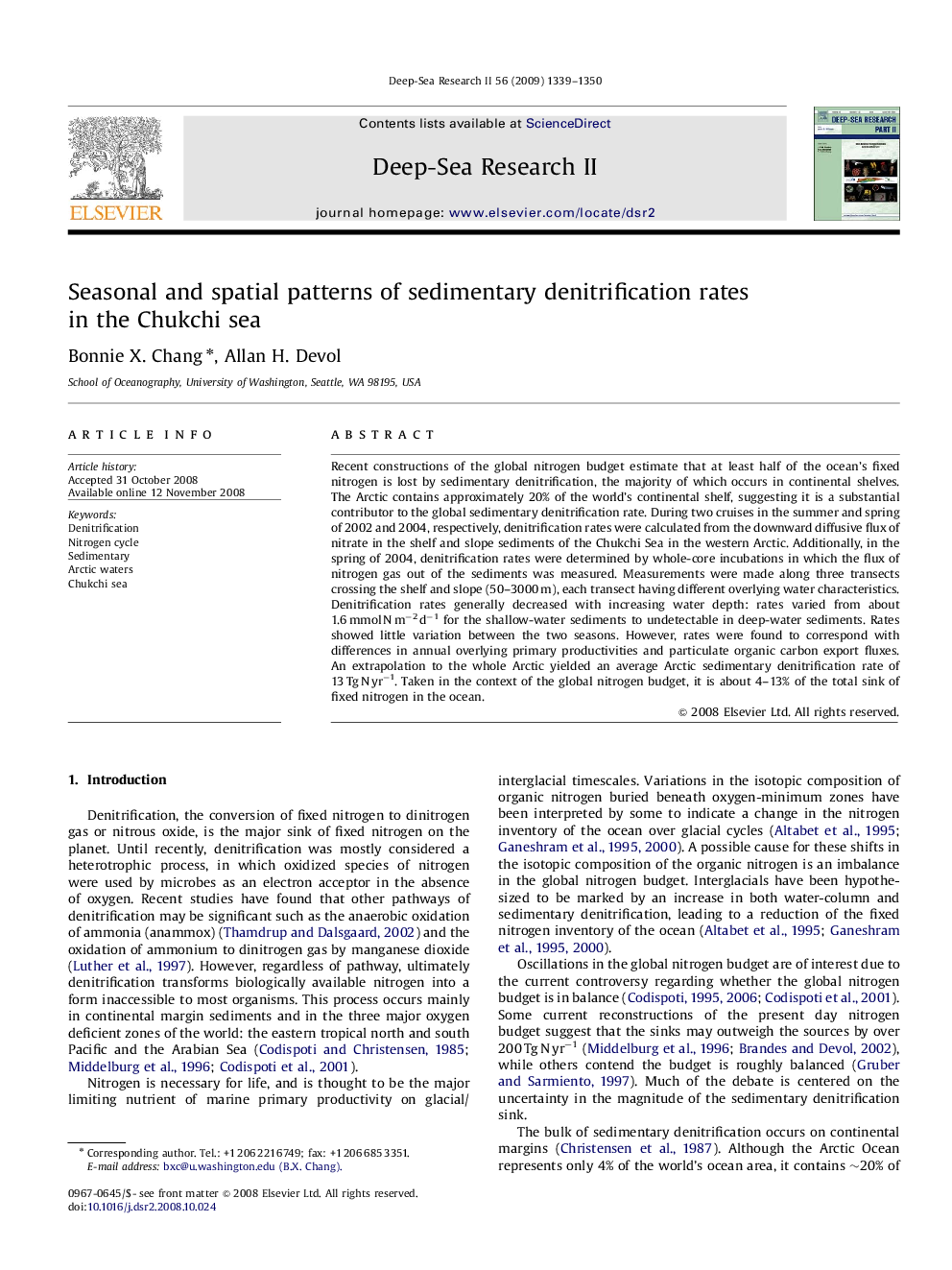| Article ID | Journal | Published Year | Pages | File Type |
|---|---|---|---|---|
| 4537546 | Deep Sea Research Part II: Topical Studies in Oceanography | 2009 | 12 Pages |
Recent constructions of the global nitrogen budget estimate that at least half of the ocean's fixed nitrogen is lost by sedimentary denitrification, the majority of which occurs in continental shelves. The Arctic contains approximately 20% of the world's continental shelf, suggesting it is a substantial contributor to the global sedimentary denitrification rate. During two cruises in the summer and spring of 2002 and 2004, respectively, denitrification rates were calculated from the downward diffusive flux of nitrate in the shelf and slope sediments of the Chukchi Sea in the western Arctic. Additionally, in the spring of 2004, denitrification rates were determined by whole-core incubations in which the flux of nitrogen gas out of the sediments was measured. Measurements were made along three transects crossing the shelf and slope (50–3000 m), each transect having different overlying water characteristics. Denitrification rates generally decreased with increasing water depth: rates varied from about 1.6 mmol N m−2 d−1 for the shallow-water sediments to undetectable in deep-water sediments. Rates showed little variation between the two seasons. However, rates were found to correspond with differences in annual overlying primary productivities and particulate organic carbon export fluxes. An extrapolation to the whole Arctic yielded an average Arctic sedimentary denitrification rate of 13 Tg N yr−1. Taken in the context of the global nitrogen budget, it is about 4–13% of the total sink of fixed nitrogen in the ocean.
